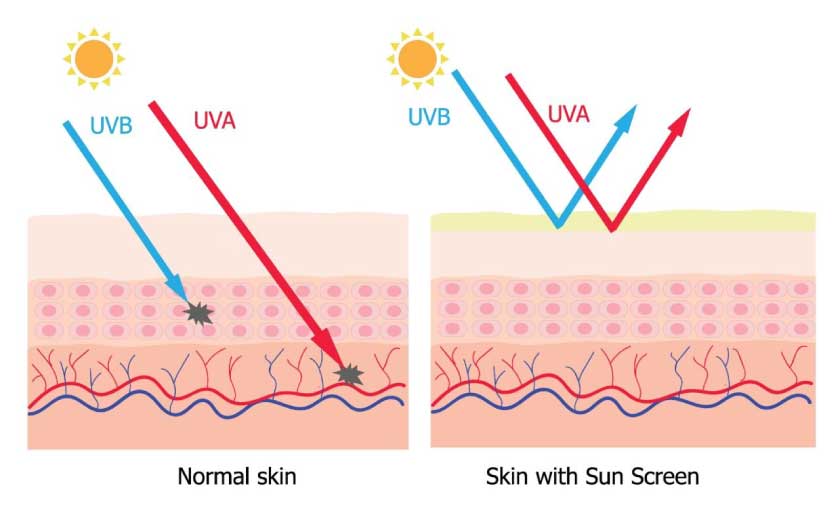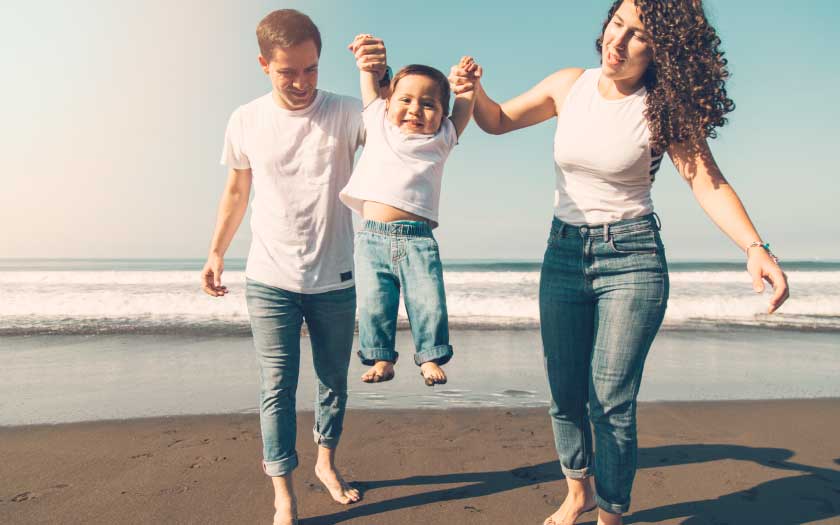Let’s face it, our country can get quite hot during the day, with supercharged sun rays shining upon us. While that may be a blessing for our laundry, it can spell trouble for the skin health of the young and old alike. Sun protection is crucial if we are to prevent health issues related to overexposure to the harmful UV rays of the blazing sun.
Harmful rays don’t discriminate
The sun’s ultraviolet (UV) radiation is the main cause of skin cancer, sunburn, premature ageing, and eye damage. UV radiation is an energy produced by the sun and it happens to be the main cause of skin cancer. UV damage also causes sunburn, tanning, premature ageing, and eye damage. UV radiation isn’t like the sun’s light or heat, which we can see and feel. Your senses cannot detect UV radiation, so you won’t notice the damage until it has been done.
One important fact to keep in mind is that UV damage in childhood significantly increases our risk of skin cancer!
While babies and toddlers may be especially susceptible to the sun’s harmful rays, older kids, teenagers, and adults are also in danger of overexposure, especially if they end to spend a lot of time outdoors. The old notion that people with darker skin are less prone to sun damage is not true either, for they can suffer from sunburns, even though it may be less visible than people with lighter skin. While the signs of a sunburn fade with time, the damage can’t be undone and adds to your lifetime tally of UV damage, which increases your risk of skin cancer. When it comes to sun protection, everyone should be protected, regardless of age and skin color.
The skin isn’t the only area in the body that may experience damage caused by UV rays. These rays can also cause photo conjunctivitis, which is also known as snow blindness; photokeratitis; macular degeneration; cataracts; pterygiums as well as cancer of the skin surrounding the eye.
Teach them from young
It might not seem like what parents would typically teach their young ones, such as washing their hands or brushing their teeth, but learning how to keep safe from overexposure to hot, direct sunlight is becoming more crucial today than ever before. As children learn best from routines, parents should take advantage of this to incorporate sun-safe steps into their kids’ daily lives, such as helping them choose to clothe that cover up and also applying sun-protection creams or balms onto exposed skin. As they grow older, keep sun protection products in their bag and encourage them to apply it when needed.
Parents’ efforts in this today may save their kids from potentially dangerous and even life-threatening skin diseases later on in their lives.

Keeping your family completely out of the sun is not advisable, for we all need some sunlight to thrive. Adequate amounts of sunlight are especially important for kids too, for it helps with the synthesis action of Vitamin D for stronger, healthier bones and teeth. The trick is to ensure good sun protection to prevent overexposure and also to block the harmful UV rays.
Photosensitivity
Photosensitivity is an abnormally high sensitivity of the skin or eyes to UV radiation. It means these organs are more susceptible to sunburns, increasing your risk of cancer.
Photosensitivity can be caused by ingesting, inhaling, or coming into skin contact with photosensitisers — substances that cause photosensitivity. Photosensitisers include industrial chemicals, drugs, plants, and some essential oils and fragrances. Some medications can cause photosensitivity. If you suspect that your child or anyone else in your family has photosensitivity, take them for a visit to the doctors at once, for advice and proper treatment.
Here are some steps that will help.
Pay attention to clothing
If you can see skin, UV can reach it. Try to cover as much skin as possible with cool, loose-fitting clothing. We do not need thick clothing in Malaysia, so choose clothes made of light cotton material instead. If a child is wearing a singlet top or dress with thin straps, don’t forget to layer up with a light, comfortable t-shirt or shirt before letting him or her play outside.
Put on a hat
Choose a hat that shades the head, face, eyes, ears, and neck. Bucket, wide-brimmed, or legionnaire hats are best. Baseball caps do not offer enough protection and are not recommended.
For babies, choose a fabric that will crumple or stretch easily when they put their head down. For younger children choose a hat size that is proportional to the size of the child’s head and provides shade across the face and neck areas. For older children, a bucket hat with a deep crown and angled brim which is at least 6cm will do nicely. A wide-brimmed hat should have a brim that is at least 7.5cm. The side flap and front peak of a legionnaire hat should meet to protect the side of the face.
Hats that can be adjusted at the crown are best. If the hat is secured with a long strap and toggle, ensure it has a safety snap, place the strap at the back of the head or trim the length so it doesn’t become a choking hazard.
Not all children will fancy wearing a hat, so persistence is needed to teach them that a hat is an important part of their going outside routine. Children are more likely to wear their hat if their parents do too, so put one on before trying to convince junior to wear one.
Stay in the shade
The shade is an important sun protection tool for all ages. In particular, babies under 12 months have very sensitive skin and should always be kept out of direct sunlight.
The shade moves with the sun, so if you’re going to be spending a lot of time outdoors, be prepared to move around a bit and follow the shade. Big trees make the best natural shade.
In any case, umbrellas are the handiest, portable shade you can have with you at all times.
When buying a pram, check that the hood can be adjusted, so that it can be moved to block out the direct sun. For the best protection, pram shade covers should completely cover the pram and be made of densely woven fabric that combines a mesh section — so the baby can look around and air can circulate — and a shade fabric section.
While driving around in our hot tropical heat, use a shade visor or hang a blanket over the side windows in the car.

Slop on sunscreen
Sunscreen should be a part of a family’s daily routine. It only takes a while to apply, but the benefits are immeasurable.
Points to keep in mind:
- Choose a sunscreen that your child feels comfortable wearing and is easy to apply.
- When trying a new sunscreen on children, test it on a small patch of skin first to make sure it is suitable.
- Many brands of sunscreen have a baby or toddler formula. These are just as good but much gentler on the skin. Look for sunscreens that have been tested for sensitive skin.
- From about the age of three, let children practise applying sunscreen so they can develop this habit before entering pre-school, where outdoor play is inevitable.
- Set up a sunscreen station in the bathroom at home so children can apply their sunscreen in front of the mirror.
- Try a clip-on sunscreen that can hang from your child’s bag and act as a visual reminder.
- Be a role model — children learn best from what they see adults doing.


